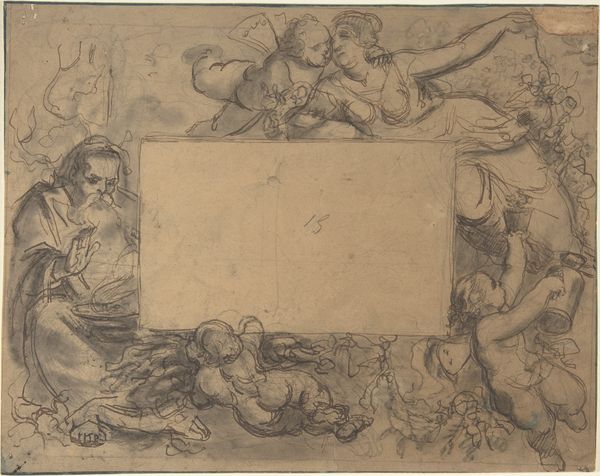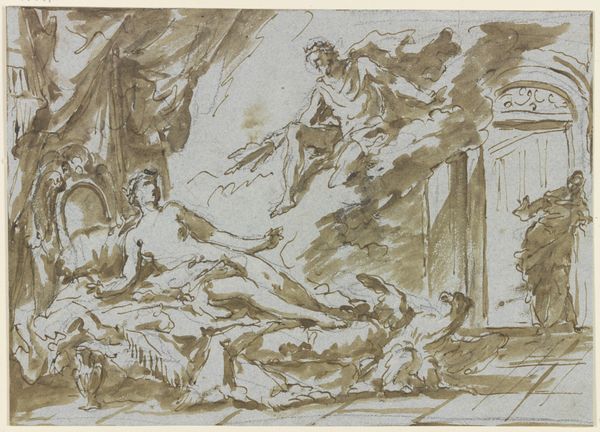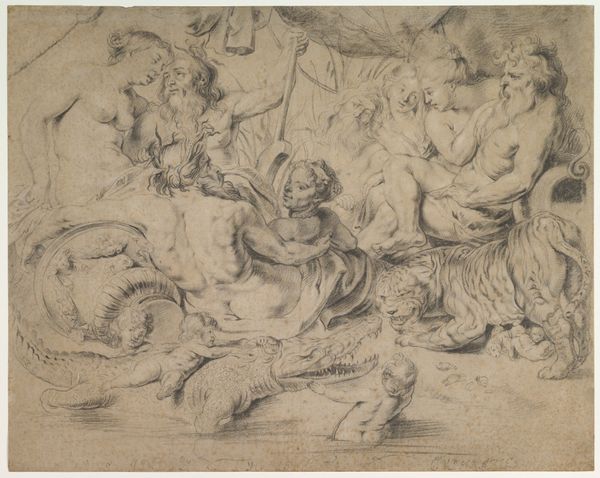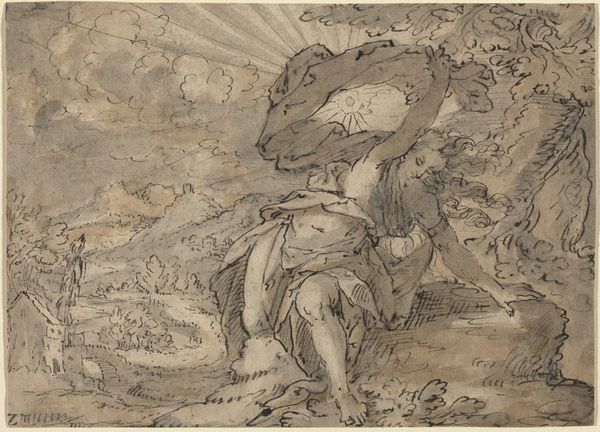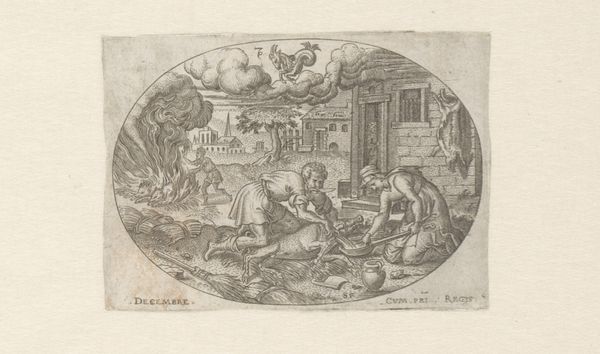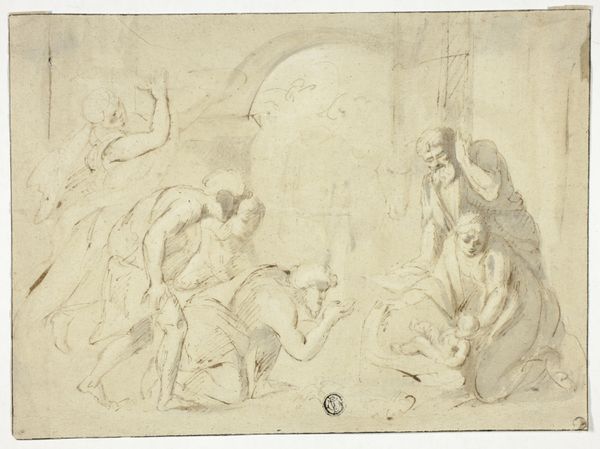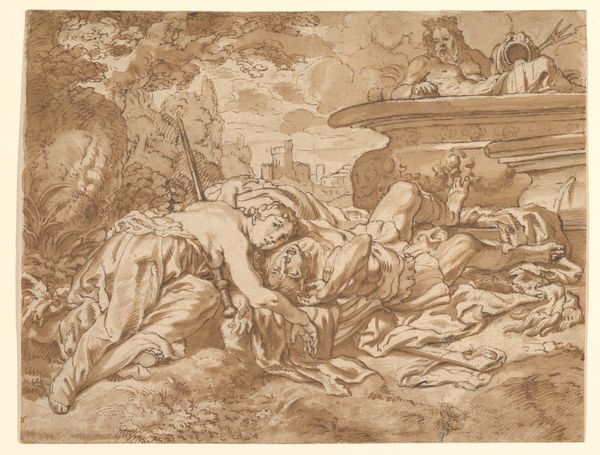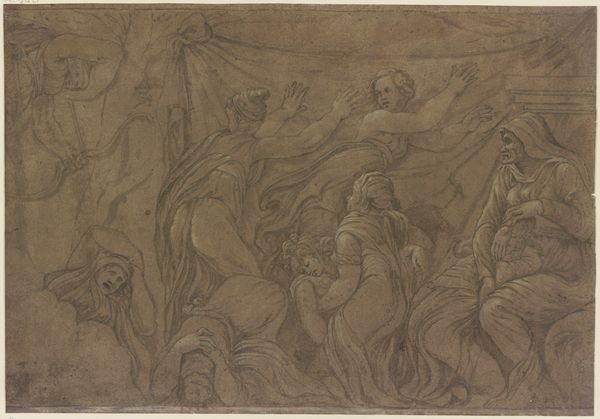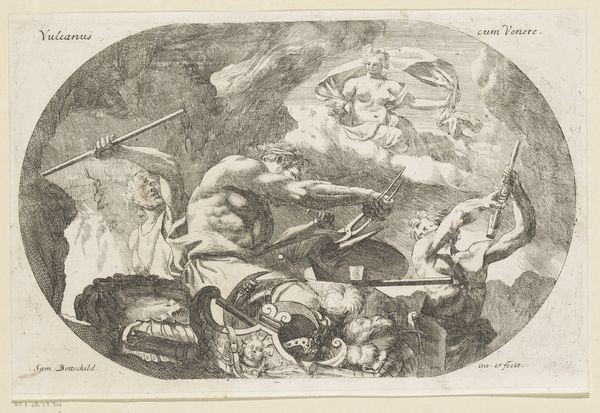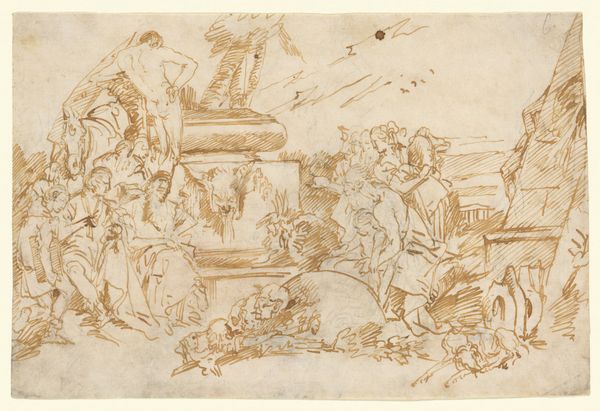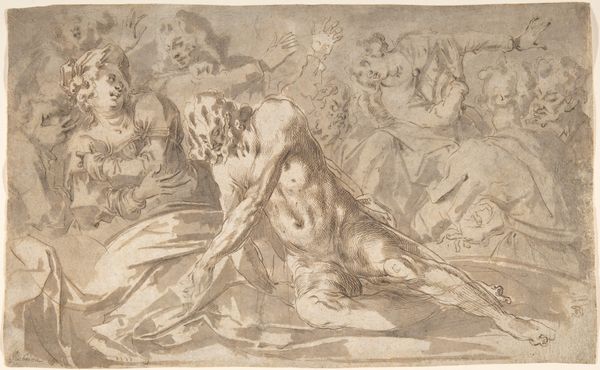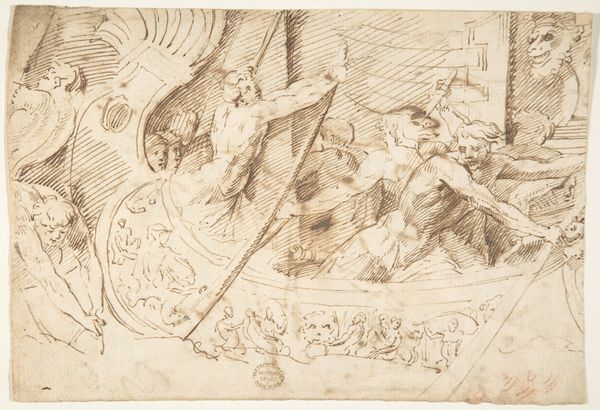
Still Life of Fruit, Musical Instruments, and Venison, with a Young Man at the Left 1672
0:00
0:00
drawing, oil-paint, charcoal
#
portrait
#
drawing
#
baroque
#
oil-paint
#
charcoal drawing
#
oil painting
#
fruit
#
charcoal
#
musical-instrument
Dimensions: 11 5/8 x 17 5/16 in. (29.5 x 44.0 cm)
Copyright: Public Domain
Editor: This is Jan Fyt’s “Still Life of Fruit, Musical Instruments, and Venison, with a Young Man at the Left," created around 1672. It's a lively drawing! What catches my eye is the sheer opulence contrasted with the young man's almost melancholic posture. What do you make of this piece? Curator: It's a fantastic example of Baroque excess, reflected not just in the abundance of goods, but also in how these elements would function socially. Think of the Dutch Republic and its wealthy merchant class at this time. These elaborate still lifes served as status symbols, celebrating earthly delights but also reminding viewers of their impermanence and that ultimate judgement awaited. How might the young man fit into this visual narrative? Editor: Maybe he's contemplating those very ideas you mentioned? The music hints at entertainment, but it seems secondary to the display of wealth. Does the way it is displayed say something about society at the time? Curator: Precisely. Notice the casual arrangement – not overly formal, almost a staged spontaneity. It reflects a shift from purely aristocratic patronage toward a market increasingly influenced by bourgeois tastes. It is like they’re reminding you what they are selling and inviting you in at the same time, isn’t it? Editor: So, the artwork's purpose changed with society itself? Curator: In a way, yes. Still life evolves from religious allegory to demonstrate tangible economic power and social mobility within a growing market-based society. Fijt provides a potent glimpse into the culture and values of the emerging Dutch mercantile class through the subtle clues found in the setting. What would you call the intended viewing audience? Editor: Hmm, I’d venture to say the merchant class? All of that makes it more than just a pretty picture, I guess! I hadn't considered how social dynamics were intertwined with this still life. Curator: Indeed! By studying such visual pieces of history, we gain an appreciation for its role in society as both art and commodity.
Comments
No comments
Be the first to comment and join the conversation on the ultimate creative platform.

